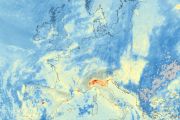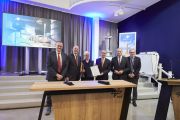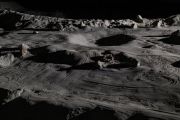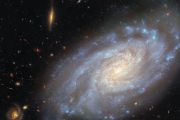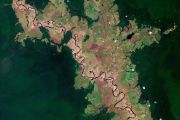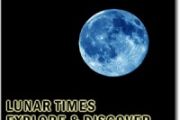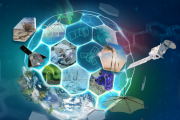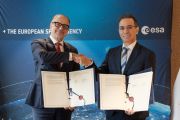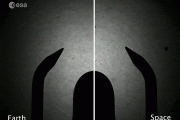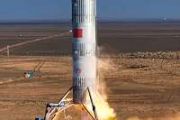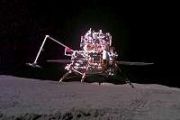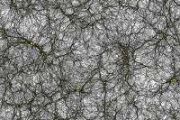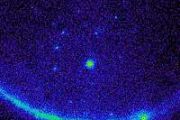
Copernical Team
Spotting cows from space
 Cows don't seem to have a whole lot going on most of the time. They're raised to spend their days grazing in the field, raised for the purpose of providing milk or meat, or producing more cows. So when students in UC Santa Barbara ecologist Doug McCauley's lab found themselves staring intently at satellite image upon image of bovine herds at Point Reyes National Seashore, it was funny, in a "Far
Cows don't seem to have a whole lot going on most of the time. They're raised to spend their days grazing in the field, raised for the purpose of providing milk or meat, or producing more cows. So when students in UC Santa Barbara ecologist Doug McCauley's lab found themselves staring intently at satellite image upon image of bovine herds at Point Reyes National Seashore, it was funny, in a "Far Fooling fusion fuel: How to discipline unruly plasma
 The process designed to harvest on Earth the fusion energy that powers the sun and stars can sometimes be tricked. Researchers at the U.S. Department of Energy's (DOE) Princeton Plasma Physics laboratory have derived and demonstrated a bit of slight-of-hand called "quasi-symmetry" that could accelerate the development of fusion energy as a safe, clean and virtually limitless source of power for
The process designed to harvest on Earth the fusion energy that powers the sun and stars can sometimes be tricked. Researchers at the U.S. Department of Energy's (DOE) Princeton Plasma Physics laboratory have derived and demonstrated a bit of slight-of-hand called "quasi-symmetry" that could accelerate the development of fusion energy as a safe, clean and virtually limitless source of power for Responsible Space Behavior for the New Space Era
 Humans have explored and exploited near-earth space for more than six decades. More recently, the past two decades have seen the start of a New Space Era, characterized by more spacefaring nations and companies and a growing risk of collisions and conflict.
Yet the basic treaties and mechanisms that were crafted 50 years ago to govern space activities have only marginally changed.
Th
Humans have explored and exploited near-earth space for more than six decades. More recently, the past two decades have seen the start of a New Space Era, characterized by more spacefaring nations and companies and a growing risk of collisions and conflict.
Yet the basic treaties and mechanisms that were crafted 50 years ago to govern space activities have only marginally changed.
Th US, Israel expand cooperation to the space domain
 The U.S. Space Force hosted its first Space Engagement Talks (SET) with the Israeli Air Force during separate virtual sessions April 19-20.
The talks brought together two nations with a shared interest in ensuring access to and peaceful use of outer space.
"Dating back to 1948, America was the first country in the world to recognize modern Israel as a nation," said Lt. Gen. William L
The U.S. Space Force hosted its first Space Engagement Talks (SET) with the Israeli Air Force during separate virtual sessions April 19-20.
The talks brought together two nations with a shared interest in ensuring access to and peaceful use of outer space.
"Dating back to 1948, America was the first country in the world to recognize modern Israel as a nation," said Lt. Gen. William L Forest measuring satellite passes tests with flying colours
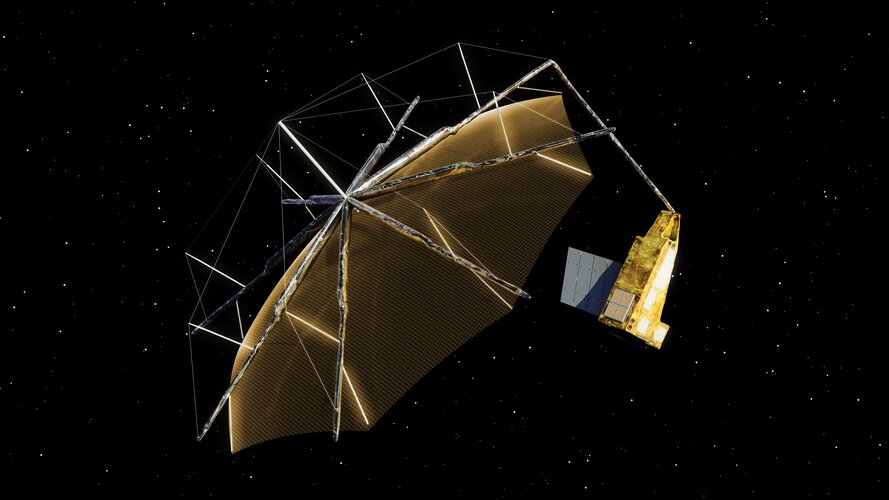
With challenges imposed by the Covid pandemic, engineers building and testing ESA’s Biomass satellite have had to come up with some clever working methods to keep on track whilst adhering to safety rules. The result is that the satellite structure is not only complete, but has also undergone a series of demanding tests to ensure it will withstand the rigours of liftoff – all bringing the launch of this extraordinary forest carbon mapping mission one step closer.
Physicists net neutron star gold from measurement of lead
 Nuclear physicists have made a new, highly accurate measurement of the thickness of the neutron "skin" that encompasses the lead nucleus in experiments conducted at the U.S. Department of Energy's Thomas Jefferson National Accelerator Facility and just published in Physical Review Letters. The result, which revealed a neutron skin thickness of .28 millionths of a nanometer, has important implica
Nuclear physicists have made a new, highly accurate measurement of the thickness of the neutron "skin" that encompasses the lead nucleus in experiments conducted at the U.S. Department of Energy's Thomas Jefferson National Accelerator Facility and just published in Physical Review Letters. The result, which revealed a neutron skin thickness of .28 millionths of a nanometer, has important implica Astronomers detect first ever hydroxyl molecule signature in an exoplanet atmosphere
 An international collaboration of astronomers led by a researcher from the Astrobiology Center and Queen's University Belfast, and including researchers from Trinity College Dublin, has detected a new chemical signature in the atmosphere of an extrasolar planet (a planet that orbits a star other than our Sun).
The hydroxyl radical (OH) was found on the dayside of the exoplanet WASP-33b. Th
An international collaboration of astronomers led by a researcher from the Astrobiology Center and Queen's University Belfast, and including researchers from Trinity College Dublin, has detected a new chemical signature in the atmosphere of an extrasolar planet (a planet that orbits a star other than our Sun).
The hydroxyl radical (OH) was found on the dayside of the exoplanet WASP-33b. Th Cosmodrome project injects new life into Russian Far East
 Sixty years after Yuri Gagarin became the first human in space, most Russians believe their country remains the leader in the field of aerospace.
It was no surprise when Moscow last year named its first approved coronavirus vaccine Sputnik, after the satellite whose launch in 1957 stunned the West.
A Bloomberg report said that while Russian President Vladimir Putin is not an interpla
Sixty years after Yuri Gagarin became the first human in space, most Russians believe their country remains the leader in the field of aerospace.
It was no surprise when Moscow last year named its first approved coronavirus vaccine Sputnik, after the satellite whose launch in 1957 stunned the West.
A Bloomberg report said that while Russian President Vladimir Putin is not an interpla Arianespace Vega mission set to launch EO satellites
 On Wednesday, April 28, 2021 at 10:50 pm local time (01:50 UTC on Thursday, April 29), Arianespace's first Vega mission of the year will lift off from the Guiana Space Center, Europe's Spaceport in French Guiana, with the optical observation satellite Pleiades Neo 3. The first of four satellites in an advanced Earth observation constellation, Pleiades Neo 3 was wholly funded and manufactured by
On Wednesday, April 28, 2021 at 10:50 pm local time (01:50 UTC on Thursday, April 29), Arianespace's first Vega mission of the year will lift off from the Guiana Space Center, Europe's Spaceport in French Guiana, with the optical observation satellite Pleiades Neo 3. The first of four satellites in an advanced Earth observation constellation, Pleiades Neo 3 was wholly funded and manufactured by NASA astronaut paints a picture of success growing plants in space
 Astronauts on the International Space Station recently enjoyed a fresh supply of leafy greens, thanks in large part to the efforts of Expedition 64 crew member Michael Hopkins. NASA's SpaceX Crew-1 mission commander took the lead on conducting four Vegetable Production System (Veggie) experiments, with the last two wrapping up after an April 13 harvest. VEG-03K and VEG-03L tested a new space cro
Astronauts on the International Space Station recently enjoyed a fresh supply of leafy greens, thanks in large part to the efforts of Expedition 64 crew member Michael Hopkins. NASA's SpaceX Crew-1 mission commander took the lead on conducting four Vegetable Production System (Veggie) experiments, with the last two wrapping up after an April 13 harvest. VEG-03K and VEG-03L tested a new space cro 


